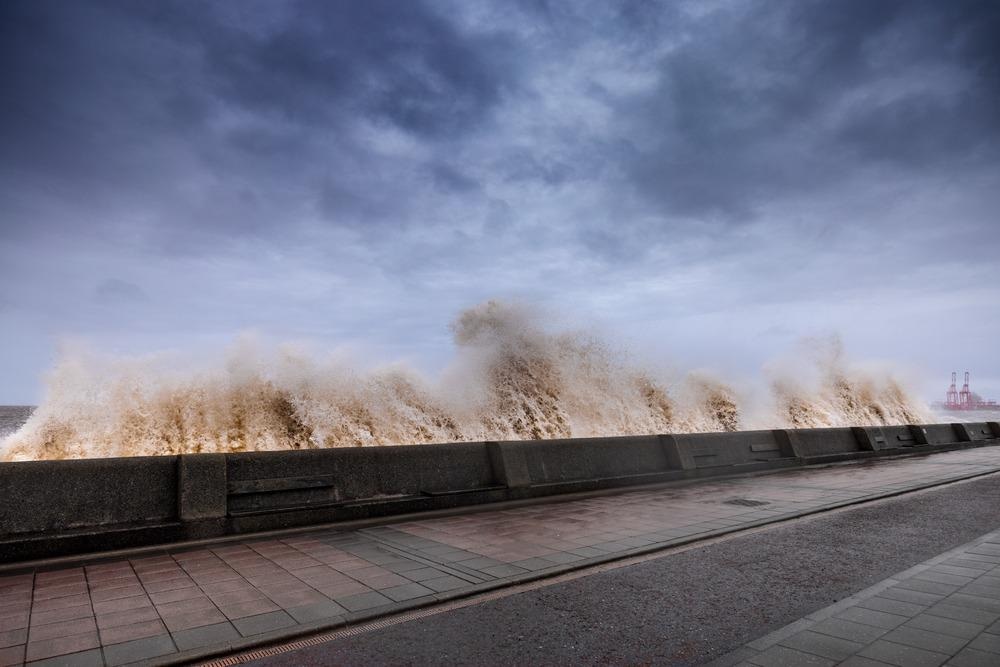
Image Credit: Paul Hanley/Shutterstock.com
Humankind is in the midst of a climate crisis, battling to prevent global temperatures from rising while also keeping up with the energy demands of a growing population. Weather-related disasters cost billions of dollars each year, but it is not just the financial cost that should be considered – there is the loss of life, homes, wildlife, and infrastructure.
There are several ways weather monitoring can help solve the climate crisis, from lowing transportation emissions to pinpointing extreme weather events such as wildfires and extraordinary variations in temperature.
Tackling Emissions
Global travel and shipping contribute significantly to global warming. Aircraft, ships, cars – nearly all modes of transportation emit harmful greenhouse gases, notably carbon dioxide, but also nitrous and sulfur oxides as well as particulates. These greenhouse gases trap heat in the Earth’s atmosphere, causing an overall warming effect and a negative impact on our climate.
Aviation accounts for 2.4% of all anthropogenic carbon dioxide emissions, with international flights in 2019 producing 915 million tons of the gas. Weather forecasting technology providing accurate, real-time data on meteorological conditions can help airlines adjust routes to avoid headwinds or take advantage of favorable winds, both of which can help reduce fuel consumption and emissions.
Shipping is one of the most fuel-efficient means of transport, but also one of the most polluting, contributing 3% of all greenhouse gas emissions - a figure expected to almost double by 2050.
“Burning bunker fuel accounts for almost 90% of global sulfur emissions and the 15 largest ships in the world produce more sulfur each year than all cars put together,” states Renny Vandewege, Vice President of Weather Operations at DTN, a company providing decision support tools and forecast insights across many sectors.
Shipping discharges a large and growing source of noxious gas but the sector has the potential to drastically cut emissions through fuel-saving techniques. Among the most promising is weather routing.
“Using weather information and analytics can help mitigate risks today caused by climate change and can also reduce emissions further reducing future impacts”, explains Vandewege, a former director of the Broadcast Meteorology Program at Mississippi State University.
Weather analytics can optimize routes and “reduce emissions up to 4% and reduce fuel consumption up to 10%, depending on the type of vessel, the season, and the conditions,” states Vandewege. “If there’s bad weather ahead, sophisticated algorithms that use information about the ship and its capabilities and the weather effects on that specific ship can make numerous calculations and provide optimal route alternatives for the mariner.”
Extreme Weather Events
Advanced weather forecasting alerts us to the probability of extreme meteorological events occurring. While these events are largely unpredictable, accurate meteorological data can identify hotspots where they are likely to occur. The better the data, the better prepared the general public and authorities can be.
Wildfires have ravaged the US state of California and huge swathes of land in Australia. Climate change is responsible for the increasing intensity and occurrence of blazes, not just here, but worldwide. It has created the optimal conditions for wildfires to start, including warmer weather, less precipitation, dryer vegetation, and stronger winds.
Advanced weather forecasting, such as DTN’s live Geographic Information System (GIS) can monitor atmospheric conditions to evaluate wildfire risk and predict areas where conditions are just right for a wildfire to ignite.
“Fire weather forecasting uses atmospheric conditions to evaluate wildfire risk,” explains Vendewege. “Meteorologists can also use their tools and experience to identify the specific location of wildfires. Sophisticated imaging systems can show fire locations in real time, allowing for a live look at the conditions using a GIS layer service containing the latest fire hotspot data and also showing the likelihood of a fire.”
Machine learning, a means of artificial intelligence, can also be used in conjunction with current forecasting methods to predicts heat waves or cold snaps. These extreme weather events are the result of unusual atmospheric patterns that researchers from Rice University realized could be taught to a pattern recognition program.
The technology, designed to work with current analog forecasting systems rather than replace them, could predict events with 80% accuracy, five days before the event occurred. Although only proof-of-concept, the technology could provide an early warning about when and where an extreme weather event might occur.
Conclusion
Humans are heavily reliant on the weather; it has a role in every aspect of our lives, from feeding us to providing power for our ever-growing needs. Climate change has warmed the planet and altered our weather, making extreme weather events such as droughts and floods more likely.
High-tech weather forecasting technology can help in the fight against climate change by monitoring meteorological conditions to aid decision making, whether that be in the aviation or shipping industry, or by helping us understand and predict natural hazards and disasters, allowing us to reduce the risk of adverse events – and the costs, environmental, economic or otherwise.
References and Further Reading
DTN, Accurate monitoring with independent sensors, DTN, https://www.dtn.com/weather/weather-environmental-solutions/. Accessed 22nd March 2021.
LM (2019), IMO 2020 is Coming to Town: Will the spiking cost of fuel cause you pain? Logistics Management https://www.logisticsmgmt.com/article/imo_2020_is_coming_to_town_will_the_spiking_cost_of_fuel_cause_you_pain. Accessed 22nd March 2021.
European Commission, Time for international action on CO2 emissions from shipping, https://ec.europa.eu/info/index_en. Accessed 22nd March 2021.
Taylor-Smith, K. (2021), Can High-Tech Weather Forecasting Reduce Aviation Emissions? AZoCleanTech https://www.azocleantech.com/article.aspx?ArticleID=1187. Accessed 22nd March 2021.
Taylor-Smith, K. (2021) Predicting Wildfires with Advanced Weather Forecasting Technology, AZoCleantech https://www.azocleantech.com/article.aspx?ArticleID=1192. Accessed 25th March 2021.
The World Bank (2017), Improving Weather Forecasts Can Reduce Losses to Development in Africa, The World Bank https://www.worldbank.org/en/news/feature/2017/09/12/improving-weather-forecasts-can-reduce-losses-to-development-in-africa. Accessed 22nd March 2021.
Sima, R. J. (2020), Combining AI and analog forecasting to predict extreme weather, Eos [online], https://doi.org/10.1029/2020EO140896. Accessed 22nd March 2021.
Disclaimer: The views expressed here are those of the author expressed in their private capacity and do not necessarily represent the views of AZoM.com Limited T/A AZoNetwork the owner and operator of this website. This disclaimer forms part of the Terms and conditions of use of this website.